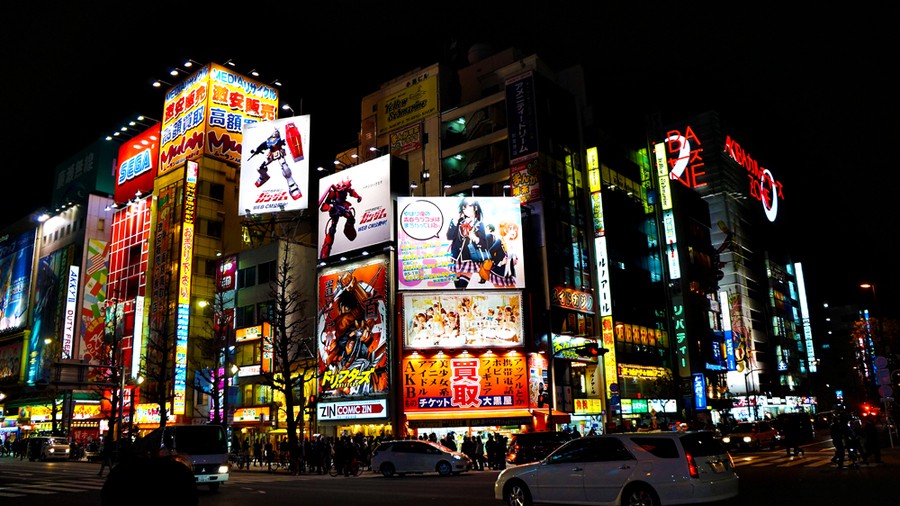
Even if you’ve never been to Japan, you’ll probably have some awareness of Akihabara. Literally the nation’s Electric Town, the district is famous for its abundance of gadgets and electrical goods. And according to lead architect Mark Cerny, the Tokyo-based shopping haven was one of the inspirations behind the design of the PlayStation 4.
“When I did pitches to developers about the hardware, I talked about what I call the Akihabara test,” he told Polygon. “I knew that at some point, there'd be out on the [Akihabara] sidewalk a PS3 and a PS4, and they might even be showing the same game, and the PS4 had to be powerful enough that when people walked by, they had to look at the PS4 and say, 'Wow, I have to have that.'”
Cerny believes that the console’s incredible pre-order numbers prove that the manufacturer’s passed the test, but that there are still some people that need convincing. “Believe it or not, at the PS3 launch, I was hearing a lot about how PS3 graphics aren't really that different from the PS2,” he continued. “I think that speaks to both how large people's expectations are, and also how launch titles are not fully exploiting the hardware.”
Much like with the current generation console, though, the Marble Madness creator believes that those criticisms will fade over time. “It's a supercharged PC architecture, so you can use it as if it were a PC with unified memory,” he explained. “Much of what we're seeing with the launch titles is that usage; it's very, very quick to get up to speed if that's how you use it. But at the same time, then you're not taking advantage of all of the customisation that we did in the GPU. I think that that really will play into the graphical quality and the level of interaction in the worlds in, say, year three or year four of the console.”
Considering the enormous gulf between Resistance: Fall of Man and The Last of Us, we have little reason to doubt Cerny’s comments. Bring on the next five years.
[source polygon.com, via briansulz.com]





Comments 16
I'm excited to see how far Naughty Dog and Santa Monica can push the PS4 this early on. Shadow Fall has set the standard for launch titles, with only DriveClub there to threaten it since Second Son won't be in our lives until February.
But how did it do in the Yakisoba test?
I spy a gundam. .. hoping for a gundam title in the first year! !! Giod anology if that's the right thing to call. .. that sign is full of different things much like the PS4 will be full of different things to do! =)
http://www.siliconera.com/2013/08/25/sony-promoting-killzone-mercenary-with-killzone-manga-in-japan/
I don't recall the PS2 and PS3 games looking anything alike, but I suppose on a 25" SD tv, which is what a lot of people probably still had back then, I can imagine them being similar. I upgraded my 36" SD to a 52" 1080p HD when I bought the PS3. Was very bad for my Wii which I had 2 years prior, but I didn't have enough room for both tvs. The tv delivery guys took my 36" away, I didn't want to mess w/ getting a 250 lb. tv out of the basement on my own for Craigslists.
I like Cerny's thought processes.
@Lelouch A killzone manga! Ta for the heads up. Ill have to import that methinks
@DoublezZ01 I'm personally hoping Dynasty Warriors; Gundam 4 is announced for the PS4 at TGS.
@ShogunRok They done with Gundam now I bet. They'll be announcing Dynasty Warriors; Neptunia for sure instead lol Its been a while sence the last Gundam hastn't it? I haven't seen the third entry in the series for AGES anywhere. You hoarding all the copies?
@ShogunRok speaking of which, when is tgs? I don't even know what month it's in.
@ShogunRok I would love to see another Dynasty Warriors; Gundam game!! How about Heavenly Sword 2 for PS4??
@rjejr
That could be it. i've played with the settings on my little SD TV over component and you can notice a difference between 480P, 720P, and 1080i but its still not that big of a difference.
People are used to seeing big leaps like we saw going from PS1 to PS2 though so that could be part of it too. The early games looked good but probably not good enough for all the hype about 1080P and everything, especially since most were only sub-HD and many people still had SD displays.
Anyway, I'm excited to see how much X86 changes things. Not just with consoles but across the board since most games will be made for standard PC architecture.
@Lelouch
Killzone manga? Frigging awesome!! Thanks for the heads up there!
On another note... I am so glad I never bought a Wii U... PS4 I can not wait!
@ShogunRok Dude...u read my mind, im hoping for DWG 4 would be sweet but i just hope the up the realism mechs and moveset!!! not to mention destroyable huge maps!!! Or something thats a cross between Gundam Battle Operations crossfire and maybe even titanfal with huge destroyable maps aswelll!!!
@ShogunRok @DoublezZ01 Either of you two played Gundam Side Story 0079 on the Dreamcast? I managed to somehow find a copy the other day, seems tough to find!, and Im just wondering how it ties into the Gundam lore.
Never had the chance First Sytem was a super nintendo, after that a PS2, First gundam game was gundam battle assault 2!
@ztpayne7 I believe TGS is 19th September to the 22nd. Not too far away!
Tap here to load 16 comments
Leave A Comment
Hold on there, you need to login to post a comment...